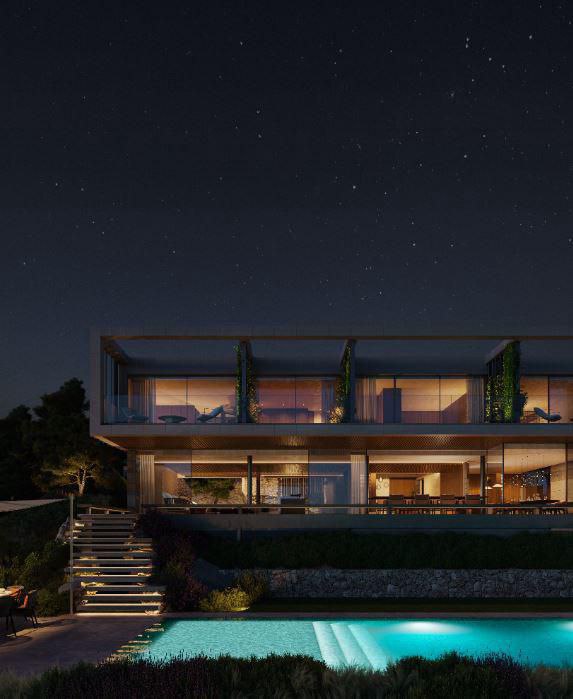
In Talat we always manage to come up with the most efficient solutions. In this case, today we want to tell you how to avoid over-lighting and unnecessary consumption through a combination of technical analysis, optimized design y efficient technology.
Here are some of our strategies:
1- First, it is necessary to know the lighting needs.
With luminance studies to calculate how much light each space needs according to its use (e.g. 150-300 lux for living rooms, 500 lux for offices, 100 lux for corridors).
Another method is "zoning the home".. That is, dividing the space into zones with different lighting requirements, avoiding over-lighting transit areas or areas with little use.
2- The second step would be to design the lighting system of our home, office, space, in general. How?
For example, placing lights at key points to maximize their reach such as a central lamp, which may be sufficient for a small room.
Opt in by luminaires with focused light beams to illuminate specific surfaces, e.g., a dining table, rather than scattering light unnecessarily.
Avoid excessively powerful lights that cause glare or consume more energy than necessary.
3- Opting for efficient technology
Dimmable LEDs that allow the intensity to be adjusted according to needs, reducing consumption at times of lower demand.
Install Occupancy Sensors. To turn on the lights only when there are people in the room.
Do you know about daylight sensors? These incorporate technology that adjusts artificial lighting according to the amount of natural light available.
4- This option will always be the best: Take advantage of natural light.
With a bioclimatic design- Arranging the layout of windows, skylights and reflective materials on ceilings and walls to maximize natural lighting.
With automatic control systems. For example, motorized blinds or electrochromic glass that regulate the entry of natural light, reducing the need for artificial lighting.
5. To be up to date in terms of regulations current
Follow international standards such as those of the IES (Illuminating Engineering Society) or local building codes, which specify recommended lighting levels for each space.
Make sure that the luminaires installed do not generate an excess of light compared to the needs of the space.
6. Automation and intelligent control
That's why Talat specializes in Domotics and programmingThese intelligent systems allow you to program on/off schedules and adjust the intensity according to the time of day or use of the space.
Circuit segmentationThis is to divide the lights into different independently controlled circuits, allowing to turn on only the necessary ones at any given moment.
7. Look for professionals like the ones we have in Talat who dedicate time to the users.
It is an important action, the fact of teaching inhabitants to use lighting efficiently, such as turning off lights when leaving rooms or using only the light needed for a specific task.
With all these actions, we will avoid wasting energy and optimize the lighting experience of the space, achieving:
- Energy savings and lower invoice costs.
- Increased visual comforteliminating glare or discomfort due to excessive light.
- Reduced environmental impactcontributing to sustainability.
At Talat, our Ingeniosophy approach combines technological tools and design to achieve functional and efficient lighting.
We hope this article on how to avoid over-illumination is helpful. If you have any questions, we would be happy to know your history ⛓️💥
